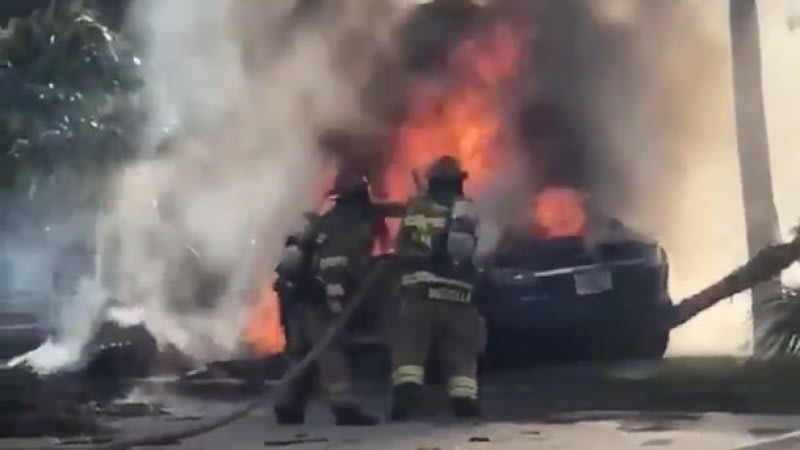Audi Repair Shop Doylestown
Call 267 279 9477 to schedule a appointment

A crash and subsequent fire of a
near Fort Lauderdale last month that
illustrates once again a unique challenge presented by
: that
battery fires are very difficult to put out.
Bloomberg reports
that police initially tried to put out the blaze using a department-issued fire extinguisher, to no avail. Chemicals used in conventional fire extinguishers are useless against lithium-ion battery fires, which are susceptible to a chain reaction known as thermal runaway. Indeed, safety experts say the only way to put out this kind of fire is with thousands of gallons of water, well more than what is required to stop a fire in a gasoline combustion engine, or to let it burn itself out.
Firefighters eventually used water to put out the flames, but the
re-ignited two more times after being towed away from the crash site, a phenomenon that has happened
. First responders eventually had to call the county hazmat unit for advice.
There are other risks to first responders as well, including motors that run silently and high-voltage cables — especially orange ones, which connote wires that carry more than 60 volts.
constitute only about 1.2 percent of total U.S. vehicle sales in 2018,
Bloomberg
reports, citing data from Edmunds, but virtually every automaker is making some degree of plans for one or more electric vehicle in its future product portfolio, with the expectation that
sales will only rise.
Meanwhile,
Bloomberg
reports that the National Fire Protection Association estimates that only about a quarter of the 1.1 million firefighters in the U.S. have undergone EV fire training. Ironically, the fire department in Fremont, Calif., home to
‘s vehicle assembly plant, has become an authority in dealing with
fires because it has responded to several incidents there, including the submersion of battery packs in water tanks.
Last fall, the
National Highway Traffic Safety Administration issued a report
that found that the risk of fires in electric vehicles “are anticipated to be somewhat comparable to or perhaps slightly less than those for gasoline or
vehicular fuels.”
also
publishes guidance for owners of electric and hybrid vehicles
with high-voltage batteries, advising owners in part to always assume that batteries and other electric components and wires are fully charged and present a dangerous shock hazard. It also noted that vehicle battery technology is still evolving and that there’s no industry consensus on what is safest in terms of system design.
Read the
.
from Autoblog https://ift.tt/2UdMZqE